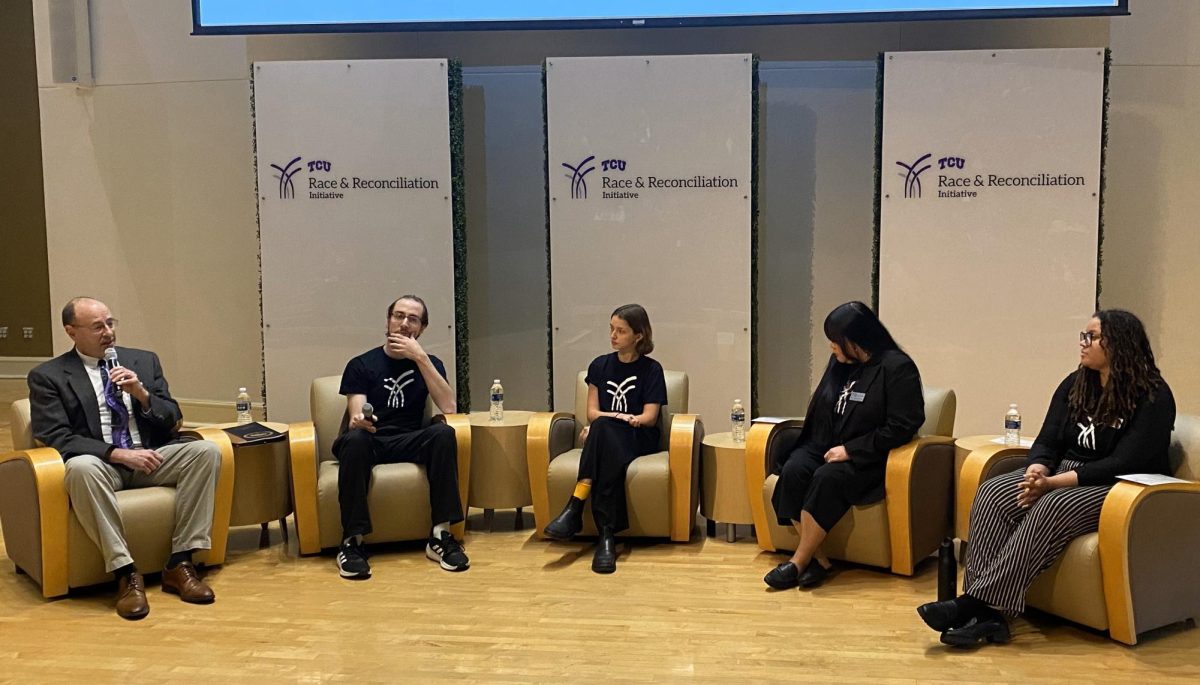Hurricane Katrina displaced 1.5 million people, leaving them homeless and wondering where to go.But when two seniors heard about one family affected by the immense tragedy, they set out to put a human face on the disaster through a documentary film.
“Your whole life is taken from you in one day, how do you cope with that?” senior radio-TV-film major Jeff Keith said. “I think that is what I’m trying to do with this documentary – show the process of rebuilding a life.”
When Hurricane Katrina slammed into the Gulf Coast in August, Keith and Rob Burnett, also a senior RTVF major, saw the storm as an opportunity for a documentary they needed to produce for a class. When the pair heard about a fraternity brother’s family from the New Orleans suburb of Jefferson Parish, La., that was forced to evacuate to the Dallas/Fort Worth area, they found the faces they would put on the tragedy.
Greg Mansur, an RTVF professor and teacher of the documentary production class, encouraged the completion of the project this spring because of its clear elements of conflict and human drama. Mansur prepared students for the assignment by having them examine their lives from a personal perspective, as well as understanding the impact of family in their lives.
“I help the students in getting them to look at their own lives,” Mansur said. “People can only tell a story from what they know.
After getting the project approved, Keith, Burnett and three other RTVF majors followed the family as it drove home to Jefferson Parish, once the Louisiana government said it was safe to return (about a week after the hurricane hit). Citizens had a 64-hour period to get into the city, salvage what belongings they could, and leave again.
“We left on a Saturday night,” Keith said. “We did the whole trip in 24 hours. We followed them down there for eight hours, we were in the city for eight hours and then we came back.”
“We were with (the family) whenever they saw their house for the first time after Hurricane Katrina – the devastation, the loss.”
Keith said he was shocked by how few government officials he saw in Louisiana and how citizens had been left to fend for themselves on the streets. He also said the reality of the situation left him thankful for his own quality of life.
The goal of this documentary, Keith said, is to put a personal face on destruction — something he feels the media has not achieved.
“I feel like the majority of all the information I’ve gotten from Hurricane Katrina is from major newscasts, which would be a situation with an objective view,” he said, “and what I’m trying to do with this documentary is give it a subject, a view from one family, and kind of do a microcosm of this family – and that way, people can understand what it’s like to be a citizen, to be one of the families that lost everything down there.”
The editing process, which began in January, involves breaking the footage into acts to allow viewers to better relate, similar to a theater piece, Mansur said.
The first act introduces the viewer to the people and their feelings. Act 2 and Act 3 try to give viewers a glimpse of how an individual’s situation improves or worsens with time.
Once editing is complete, the original 16 hours of footage will have turned into about a 20-minute film, Keith said. He said the goal is to finish the editing by May so it can qualify for the Hot Springs Film Festival in Arkansas, which focuses on documentaries.
Mansur said that through this project, he hopes students will learn to make editing choices that add to the story’s personal appeal to viewers.
“I want them to be able to go out and tell a story about real people and real events,” Mansur said.
Keith said the lesson he learned during the whole experience was that being united with family in devastation has the same effect on displaced people as a structurally sound home.
“One of the main things that I found is that home is not necessarily a tangible place – it’s more of a feeling.”
Keith and Burnett plan to return to the New Orleans area the weekend of April 22, when citizens will elect a new governor, to film about five more hours of footage.
Numerous attempts to contact Burnett over a two-week period were unsuccessful.




